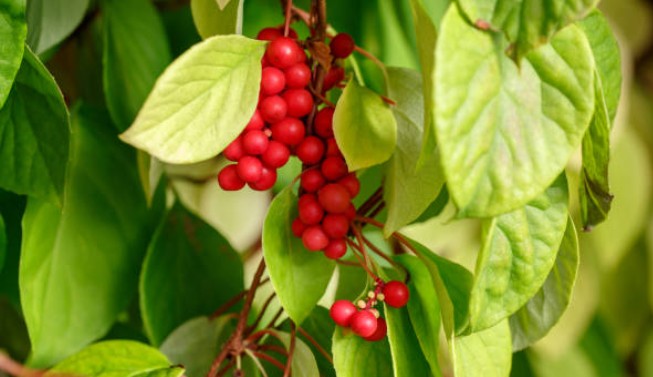The magnolia vine is a beautiful plant that produces delicious and nutritious berries. You’ll often see it referred to as the “Five fruit plant” due its berries’ unique flavors. This plant is used to cold temperatures, and is able to survive even when the temperature drops. In fact, it requires periods of cold in order to actually bear fruit. Today, we’ll look at this plant, the care it needs to grow, and some of the things to keep in mind if you’d like yours to bear fruit.
How Big Do Magnolia Vines Get?
The magnolia vine grows quite large, and can get up to 20’ in length. This means you do need a decent amount of space to grow them. While their climbing nature means you can utilize vertical space, it’s important to set aside an appropriate amount of room for them to grow.
Luckily, due to their hardy nature, it’s very easy to grow them outdoors. Even here in the midwest, the magnolia vines will survive the winter, and go on to bear fruit the following summer. If you lack the indoor space to grow them, outdoors is always an option for the majority of growers.
In either case, getting some trellis to aid in growth will be essential. This gives the vines something to grow onto and is key for long term health. Magnolia vines are very easy to guide, so it should only take a little effort to get them to go where you want them.
Planting and Container
Start with well draining potting soil. Most commercial soil is perfectly vine, magnolia vines are not that picky. They do like their soil a little acidic, so some compost rich in plant matter like pine needles can help move your soil in that direction.
For a container, choose a large one that can completely contain the root ball of your vine. You can also plant directly into the ground if you have proper soil.
Lastly, as noted above, you’ll need to plant near some sort of structure or trellis. This gives the plant somewhere to grow and will provide support for the plant. You can use plant ties to help secure the plant and guide it in your desired growth direction. The plant tends to be quite easy to guide, so you shouldn’t have any problems getting it to climb your chosen support.
Sunlight
Magnolia vines are not very light hungry, and do well with some shade. You want to avoid direct sunlight, as the intensity can burn out the leaves of the plant. You’ll usually see this as browning or yellow edges.
Outside of the most intense sun, magnolia vines will grow well in most other locations. This can range from light to heavy shade. If you’re looking for fruit, place them in a location that gets a moderate amount of sun coupled with some periods of shade.
Water and Feeding
Magnolia vines enjoy a good deal of moisture and should be watered regularly. Check the soil and water when dry, this will usually be every couple of days but may be more in the summer. Magnolia vines are not very tolerant of droughts, so stay on top of their watering schedule.
For feeding, you can give them a bit of water soluble fertilizer roughly every month during the summer. You can stop this in the winter as the plant goes dormant. If possible, you can also use an acidic compost full of organic matter which will provide the nutrients the plant needs to grow. They like acidic soil, so this is an easy way to provide that.
Producing Fruit
Schisandra magnolia vines will generally produce flowers in the spring and then fruit into the summer. Generally, you will need both a male and female plant for them to produce fruit. Certain breeds however don’t, so check which variety you’re getting or visit a nursery that can guide you in the right direction.
To pollinate, gently rub the flowers of one plant with a soft instrument like a cotton swab. Then, do the same with the other plant. This will properly cross-pollinate the plants. If you’re growing outside, you usually don’t need to worry about this as bugs and the wind will do this for you.
Periods of cold are also needed for the plant to properly produce fruit. If grown outside, you’ll get this in the winter naturally. Indoors however, you may need to locate them in an area that gets cooler for several months during the winter. A basement or spare bedroom are often good choices. Since this plant has relatively low light requirements, it’s not too much of a problem if the chosen area isn’t in bright light.
How To Grow Schisandra Magnolia Vines
These plants are the perfect addition to any garden, and the fruit they produce is both delicious and nutritious. While they do require a good amount of space, it’s well worth it once your plant starts bearing fruit. Group that with their easy care, and it makes a great, low-maintenance plant to add to your garden this summer.







